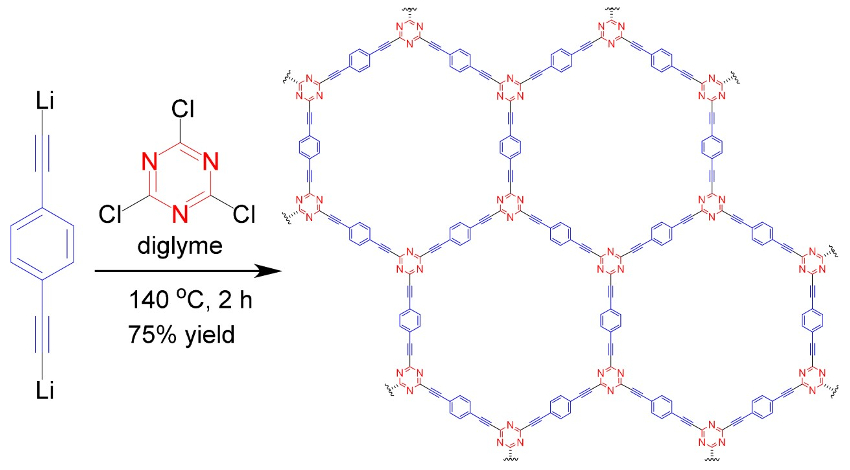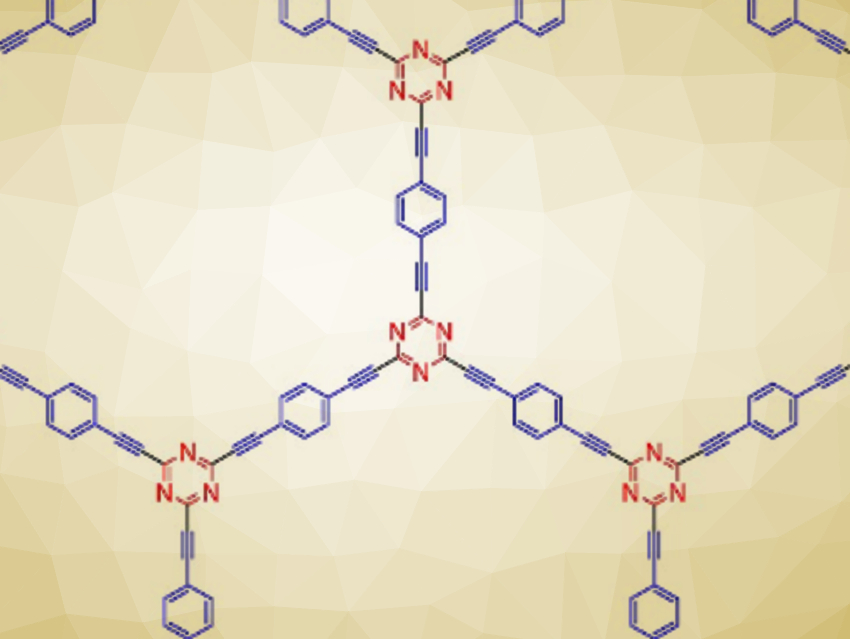Graphyne (GY) is a theorized one-atom-thick carbon structure, consisting of sp2-hybridized carbon atoms (i.e., benzene rings) bridged by sp-hybridized carbon atoms (i.e., ethylenic groups). Owing to its unique structure, GY could be a useful compound in many fields, e.g., for semiconductors. However, the synthesis of GY has proven to be very challenging. Thus, several research groups have been investigating analogues of GY.
Wei‐Bo Hu, Shanghai Advanced Research Institute, Chinese Academy of Sciences, Hui Yang, Ke Wen, Shanghai Advanced Research Institute and ShanghaiTech University, China, and colleagues have synthesized a new analogue of GY, a triazine- and 1,4-diethynylbenzene-based graphyne-like compound (TA-BGY, pictured). The synthesis of TA-BGY was performed via aromatic nucleophilic substitution reactions (SNAr) between cyanuric chloride and the dilithium salt of 1,4-diethynylbenzene in bis(2-methoxyethyl) ether (diglyme).
The structure of TA-BGY was characterized thoroughly by a variety of analytical methods, including solid‐state 13C NMR spectroscopy, thermogravimetric analysis (TG), powder X‐ray diffraction analysis (PXRD), field-emission scanning electron microscopy (FE‐SEM), field-emission transmission electron microscopy (FE‐TEM), and atomic force microscopy (AFM). The team found that the product has an extended 2D porous network structure with a Brunauer–Emmett–Teller (BET) surface area of approximately 300 m2 g−1 and a narrow optical band gap of 1.44 eV. TA-BGY shows promise for photocatalytic water purification. It has a high efficiency for the photodegradation of dyes such as methyl orange as well as for the photocatalytic inactivation of bacteria.

- A Triazine‐Based Analogue of Graphyne: Scalable Synthesis and Applications in Photocatalytic Dye Degradation and Bacterial Inactivation,
Tao Chen, Wen‐Qian Li, Xiao‐Jia Chen, Yun‐Zhe Guo, Wei‐Bo Hu, Wen‐Jing Hu, Yahu A. Liu, Hui Yang, Ke Wen,
Chem. Eur. J. 2020.
https://doi.org/10.1002/chem.201905133



